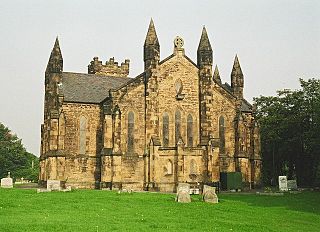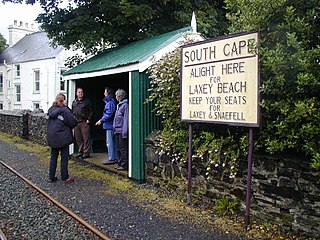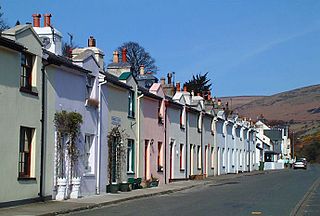History
The wheel was purchased by the Snaefell Mining Company in 1865. Built by Messrs Leigh and Gilbert Howell of the Hawarden iron works in Flintshire, north Wales, it was one of two identical 50 ft (15.24 m) diameter wheels to be produced.
By 1910, the wheel had come to the end of its working life at the Snaefell Mining Company and was disassembled to be sent to Bodmin, Cornwall. By the 1950s the wheel had fallen into disuse, and in 1971 the Cornish Wheel Preservation Society had acquired the wheel and dismantled it for preservation. The society later merged with the Trevithick Society, who are the current owners of the wheel.
In 1976, the Llywernog Silver Lead Mine in Wales took the wheel on loan from the society though never reconstructed it.
In 2003, an effort was started to restore the wheel to its home in Laxey and on 20 August 2006, the wheel had its official reopening ceremony and began turning for the first time in decades.
To mark the occasion of the official opening, and in similarity to its big sister, a piece of music "Snaefell Wheel March" was specially written by Paul Dunderdale for the occasion and performed for the first time by Onchan Silver Band at the opening ceremony, with suitable fanfare.

Laxey is a village on the east coast of the Isle of Man. Its name derives from the Old Norse Laxa meaning 'Salmon River'. Its key distinguishing features are its three working vintage railways and the largest working waterwheel in the world. It is also the location of King Orry's Grave.

Dübs & Co. was a locomotive manufacturer in Glasgow, Scotland, founded by Henry Dübs in 1863 and based at the Queens Park Works in Polmadie. In 1903 it amalgamated with two other Glasgow locomotive manufacturers to create the North British Locomotive Company.

The Laxey Wheel is built into the hillside above the village of Laxey in the Isle of Man. It is the largest working waterwheel in the world. Designed by Robert Casement, the wheel has a 72-foot-6-inch (22.1 m) diameter, is 6 feet (1.8 m) wide and revolves at approximately three revolutions per minute.

The Manx Electric Railway is an electric interurban tramway connecting Douglas, Laxey and Ramsey in the Isle of Man. It connects with the Douglas Bay Horse Tramway at its southern terminus at Derby Castle at the northern end of the promenade in Douglas, and with the Snaefell Mountain Railway at Laxey. Many visitors take an excursion on the trams. It is the oldest electric tram line in the world whose original rolling stock is still in service.

The Snaefell Mountain Railway is an electric mountain railway on the Isle of Man in Europe. It joins the village of Laxey with the summit of Snaefell, at 2,036 feet (621 m) above sea level the highest point on the island. It connects with the Manx Electric Railway (MER) in Laxey. The line is 5 miles (8 km) long, is built to 3 ft 6 in gauge and uses a Fell Incline Railway System centre rail for braking on the steep gradients. It is electrified using overhead wires at 550 volts direct current, with bow collectors.

Weardale is a dale, or valley, on the east side of the Pennines in County Durham, England. Large parts of Weardale fall within the North Pennines Area of Outstanding Natural Beauty (AONB) – the second-largest AONB in England and Wales. The upper dale is surrounded by high fells and heather grouse moors. The River Wear flows through Weardale before reaching Bishop Auckland and then Durham, meeting the sea at Sunderland.

Bagillt is a market town and community in Flintshire, Wales. The town overlooks the Dee Estuary and is between the towns of Holywell and Flint. At the 2001 Census the population was recorded as 3,918, increasing to 4,165 at the 2011 census. The community also includes the villages of Walwen and Whelston.

The Great Laxey Mine Railway was originally constructed to serve the Isle of Man's Great Laxey Mine, a lead mine located in Laxey. The 19 in gauge railway runs from the old mine entrance to the washing floors along a right of way that passes through the Isle of Man's only remaining railway tunnel under the 3 ft gauge Victorian Manx Electric Railway and the main A2 Douglas to Ramsey coast road.

South Cape is an intermediate stopping place on the easterly section of the Manx Electric Railway on the Isle of Man.

The Berlin Historic District encompasses the ghost town of Berlin in Nye County, Nevada. The town was established in 1897 as part of the Union Mining District after the opening of the Berlin Mine the previous year. The name is a transfer from Berlin, in Germany, the native land of a share of the local prospectors. The town never prospered to the same extent as other boom towns like Tonopah and Goldfield, and declined following the Panic of 1907. The town was largely abandoned by 1911. The site was acquired by the state of Nevada as part of Berlin–Ichthyosaur State Park in 1970.

Dumbell's Row is an intermediate stopping place on the Manx Electric Railway on the Isle of Man and is the first on the northern section of the line from Laxey, opened in 1899.

The Great Snaefell Mine, also referred to as the East Snaefell Mine, was a zinc mine located high in the Laxey Valley on the slopes of Snaefell Mountain, in the parish of Lonan, Isle of Man. The mine reached a depth of 1,188 ft (362 m) and is remembered as the scene of the Isle of Man's worst mining disaster in 1897.
The Great Snaefell Mining Company was a mining company formed to operate the Great Snaefell Mine on the Isle of Man.

The Great Laxey Mine was a silver, lead ore and zinc mine located in Laxey, in the parish of Lonan, Isle of Man. The mine reached a depth in excess of 2,200 ft (670 m) and consisted primarily of three shafts: the Welsh Shaft, the Dumbell's Shaft and the Engine Shaft; each of these shafts was connected by a series of levels.
The Ballajora Mine also referred to as the Maughold Head Mine, was an iron ore, hematite and copper mine located in the parish of Maughold, Isle of Man. The mine lay principally on the farmland of Magher-beck. The head engineer of the mine, referred to as the Mine Captain, was John Faragher.
The Maughold Head Mine was a copper mine located in the parish of Maughold, Isle of Man.
The Dhyrnane Mine was a hematite and iron ore mine located in the parish of Maughold, Isle of Man.

The Foxdale Mines is a collective term for a series of mines and shafts which were situated in a highly mineralised zone on the Isle of Man, running east to west, from Elerslie mine in Crosby to Niarbyl on the coast near Dalby. In the 19th century the mines were widely regarded as amongst the richest ore mines in the British Isles.

John Kewley was Captain of the Great Snaefell Mine, Isle of Man. He is remembered for his heroism following the Snaefell Mine Disaster of 1897, during which he displayed extraordinary courage and endurance and for which he received the Medal of the Honourable Order of the Knights of St John of Jerusalem.

Agneash is a small village in the Isle of Man, 1.9 kilometres (1.2 mi) by road north of Laxey. Agneash Primitive Methodist Chapel opened in 1857.
















